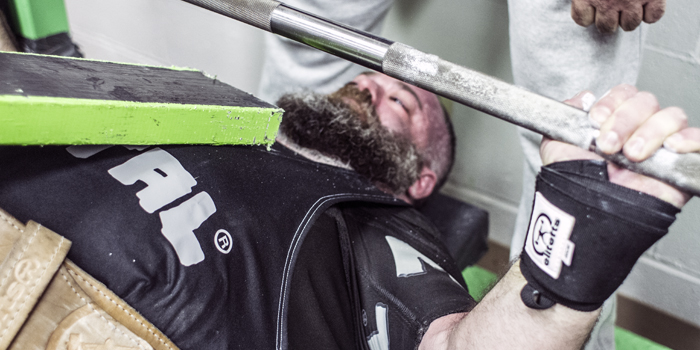
If you follow the advice given in this article I am confident that you will hit your biggest bench press at your next powerlifting meet. I’m going to give you the keys to be so prepared that you can’t miss! I’m also outlining the training program I use with my athletes to ensure you’re ready to press the most weight possible on meet day.
Becoming Unstoppable
Before we touch on the bench peaking program, we need to review a lesson in being prepared. What does being prepared entail? There is both a physical and mental aspect of preparation. Physically, you are at your best at the time of the meet. You have done the training, you have put in the work, and you are rested and ready to go. Mentally, you have eliminated any doubt. You know the attempts you are going to take, you have played out the moment in your mind, and all there is left is to go out and execute. Being prepared on meet day encompasses a few traits.
Confidence
Confidence is what separates success and failure. A confident lifter is a dangerous lifter because they are capable of almost anything. There is no doubt in your mind capable of stopping you from achieving what you came to do. The mind is what limits the body. When you don’t impose any limitations on yourself, anything is possible. There’s just another loaded bar out there for you to lift, and you will crush it no matter what weight they put on in.
You also need to portray the attitude and demeanor of a confident lifter. You can’t look rattled. Stare at everyone else in the room like you're asking, “who’s coming in second place?” even if you aren’t the strongest lifter. The mind leads and the body follows. When your name is called, approach the bench like you’ve been there before. This is finally your time. You've put in hours and hours of hard work for 60 seconds of spotlight. Don’t rush yourself, take your time, and showcase your skill.
Health
Being healthy and rested is much more important than how strong you are because you will never be able to display full strength if you aren't healthy. In the last few weeks leading up to the meet, there is not much you can do to get stronger, but there is a whole lot you can do to make yourself weaker. Heavy work should be wrapped up two weeks prior to a meet. Everything after that is technique and rest.
If you’re continuously coming into a meet banged up, you will never perform at your best. Your health needs to dictate the last three weeks of your peak. If your elbow or shoulder is feeling banged up then you need to scratch any heavy work that could aggravate it. Always keep in mind that when you’re not 100% you are cutting into your strength potential.
RECENT: What I Learned from Benching with Dave Tate
Now, this doesn’t mean you should baby yourself over any bump or bruise. We are powerlifters and lifting heavy weight beats you up. We all have our laundry list of nagging injuries. You need to have an idea of how quickly you can recover from whatever is bothering you. If you know you can recover with a week of rest, you can more easily modify what you're doing. If you have a bad injury and aren't sure how long it may take to recover then you need to play it smart.
Strength
Let's not forget the trait that actually allows you to lift the weight! Being prepared also requires that you possess the strength to get the job done. This is where you need to be realistic with yourself and select attempts that you can actually achieve. If you want a 315 bench at the meet, there need to be certain lifts during the training cycle that indicate to you that you are strong enough to hit this lift. If you keep getting stapled every time you unrack 315 then don’t take it on meet day!
Just because you want to hit a certain number doesn't mean you’re strong enough to do it yet, and that’s alright. Ask yourself what is realistically in your strength range. Trust me, you’ll be in a much better place hitting all your lifts and ending with a nice PR than shooting for a crazy number, looking silly, and potentially injuring yourself in the process.
Peaking for the Meet
Now that you understand the traits that help develop the mental and physical state of preparation, it is time to take a look at what a successful structured meet peaking program looks like. I have used the following template to help peak my athletes to hit their best numbers ever on the platform. I encourage you to give it a try and use it with your athletes for bench pressing as well.
Bench Press Peaking Program
Week 1
Day 1
- Bench Press (Competition Pause) — 4x3 (RPE 7), 3x1 (RPE 8)
- Floor Press, 80 Pounds Chains or Bands — 4x6
- Wide Grip Barbell Rows — 4x8
Day 2
- Bench Press — 10x2 with 75%
- Shoulder, Back, Triceps Work
Week 2
Day 1
- Bench Press (Competition Pause) — 2x3 (RPE 7), 3x1 (RPE 8), 2x1 (RPE 9)
- Floor Press, 80 Pounds Chains or Bands — 3x8
- Wide Grip Barbell Rows — 3x10
Day 2
- Bench Press — 10x2 with 80%
- Shoulder, Back, Triceps Work
Week 3
Day 1
- Bench Press (Competition Pause) — 3x1 (RPE 6), 3x1 (RPE 7)
- Competition Bench 3x6 (RPE 7)
- Seal Rows 4x8
Day 2
- Bench Press — 10x2 with 85%
- Shoulder, Back, Triceps Work
Week 4
Day 1
- One-Board — Bench Opener
- Two-Board — Second Attempt
- Three-Board — Third Attempt
- Competition Bench — 4x5 (RPE 8)
- Seal Rows — 5x6
Day 2
- Bench Press —10x1 with 80%
- Shoulder, Back, Triceps Work (Switch Movements from Weeks 1-3)
Week 5
Day 1
- Competition Bench Press — Opener
- One-Board — Second Attempt
- Two-Board — Third Attempt
- Competition Bench — 3x5 (RPE 7)
- Seal Rows — 4x8
Day 2
- Bench Press — 10x1 with 85%
- Shoulder, Back, Triceps Work
Week 6
Day 1
- Competition Bench Press — Opener, Second Attempt
- One-Board — Third Attempt
- Competition Bench — 2x8 (RPE 6)
- Seal Rows — 3x12
Day 2
- Bench Press — 10x1 with 90%
- Shoulder, Back, Triceps Work
Week 7
Day 1
No later than Tuesday for a weekend meet.
- Two-Board — Bench Opener, Second Attempt
- Lat Pulldown — 2x25
- Triceps Pushdown — 2x30
Day 2
- Rest
Weekend Meet
Why It’s Successful
The key to this peaking program is consistent setup practice. You need to treat the bench press as its own individual movement that needs to be perfected multiple times. Like a weightlifter pays critical attention and analysis to their clean and jerk, to be successful in the bench press you need the same type of technical dedication. This is what inspires day two of the program.
On day two you are handling rather high percentage weights for a high volume of sets. This is a superior way to train during the meet peak over the traditional three sets of five reps (lower sets, higher reps) because it allows you to practice setting up and hitting single reps. What are you doing during the meet? You’re hitting one rep. No one cares how you look on reps two and three. Training in this fashion allows you 10 setups and 10 first reps, compared to three setups and three first reps.
What is also included is board work. Boards can be used effectively whether you train equipped or raw. They allow you to handle high percentage weights with a greater rate of success. This will train your nervous system to handle these heavier weights and allow you to train with the same bar path that you’d normally have, versus a Slingshot, which may change your groove a bit. On this program, you are working down in boards as the meet approaches. By the beginning of week six, you will only be about one inch away from landing your third attempt weight to the chest.
This is all designed to build confidence, as we discussed earlier in the article. In these seven weeks, you will have taken your opener two separate times and your second attempt once. If they went well, you know you’ve done them before and they shouldn't trip you up on meet day. If you had difficulty hitting these in training then you know you have to lower your attempts for the meet.
MORE: Hunger Is Not Enough: Attempt Selection
The great part of this peaking program is that it allows you to work with your planned attempts. You aren’t training with random numbers or percentages; you are training with the exact weight you will be lifting at the meet multiple times. You will have so much practice handling these exact weights that you will become accustomed to the feel of them. This will only help you create a familiar environment on meet day and ensure you find success.
A lot of people argue over whether percentage-based training or RPE training is better. I say why not utilize them both? In this program, you will find both training based off percentages and training based off an RPE scale. I’m a big fan of using both to get results. RPE is great for training to build some additional strength and percentage is great when you’re prepping to build up to certain numbers. They are both effective training styles when used alone but they can create even better training effects when used together!
Regarding accessory work, I like to keep it simple. Perform exercises you know you’re weak at and that allows you to progress in weight on a weekly basis. I found a lot of value in barbell overhead presses, triceps pushdowns, barbell rows, and dumbbell shoulder presses. Keep your exercise repertoire simple and work to continuously get stronger each time.
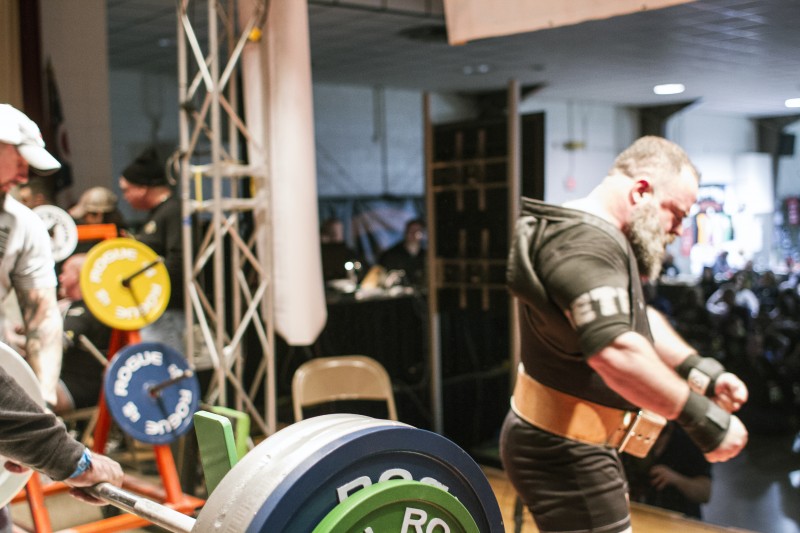
This program will also provide you great success because it allows you to rest properly. Every piece of programming in here is carefully placed to allow you to recover session to session. Everyone is a little different in their recovery capabilities, so if you feel you cannot keep up with the work and start feeling fatigued, cut the volume or take a rest day. Heavy lifting is wrapped up about two weeks prior to the meet, as we discussed, to allow you ample time to recover and come in 100%.
For equipped lifters, I would follow the same general template with some adjustments. I try to not be in my shirt more than two weeks straight. Too much shirt training leaves me beat up and I find the same to be true with others. I would stick to the board work outlined in the program on day one but start it a week earlier. Day two I would have equipped lifters perform in a Slingshot or a Titan Ram to keep the shirted setup and groove down. If any equipped lifters have any questions on how to modify this peaking program, feel free to email me at coachben@bigbenchas.com.
My Experience
My last meet was probably the meet I was most prepared for in my career. I attribute this to executing all the things I talked about above, plus this style of meet peaking. This past meet I benched 650 at 248 pounds and went three-for-three. My exact feeling was that you could have thrown anything on that bar and I would have hit it. Confidence was at an all-time high because I had been (and am) riding a series of successful training cycles and meets, as I alluded to in my video.
This past training cycle I hit my opener of 585 three times in training. I have done it so many times that I knew there was no way I could miss at the meet. This will be your experience as well when you follow this peaking program. I also hit a 10-pound PR of 615 , which was my planned second attempt. Based on how this moved, I knew not only would I hit this on the day it counted, but I could also achieve a much greater number.
My planned third attempt of 650 was something I took my time working down from a two board to a one-and-a-half board, and eventually to a one-board. Every time in training, my 650 set was my smoothest of all. I had developed all the confidence I needed in training to ensure that I could not miss at the meet. This goes back to what I was saying at the beginning about being prepared. I had developed the confidence needed to hit my numbers, I kept myself healthy by completing my last heavy session three weeks out, and through training, I knew I had the strength needed to achieve this.
RECENT: Bench Pressing Secrets of the Pros
My intention in sharing my experience is to hopefully show you how I executed the plan to help create a high level of preparedness going into the meet. When I went to bench at the meet, there was a feeling of “I have done this before,” which helped further fuel my burning confidence. There wasn't any doubt creeping in if I could do this or not. This is the same level of preparedness and confidence you can create for yourself as well if you follow the plan I laid out in front of you!
Tips For Meet Week
An article on meet preparation wouldn’t be complete without sharing some tips regarding the period of time between your last training session and when you go to take the platform. The week leading up to the meet can be just as important as the meet itself. What you do with this “down” time can ultimately make or break your performance. Make sure you are influencing your potential for the better.
Extra Rest and Naps
Get as much sleep and rest as you can! This falls under being healthy and 100% for the day that counts. Sleep is our ultimate recovery tool. Get as much of it as you can during this week, and if you have a hard time getting enough hours of sleep in, take naps when possible. I understand not everyone has the luxury of additional sleep or even naps, but when you find yourself with 30 minutes free, try taking a quick snooze instead of wasting away on Instagram or Facebook. This becomes especially critical when you’re carrying around small injuries and pains.
Visualization
The night before the meet I will lie down in a quiet room and put my headphones on. I close my eyes and I picture how the meet will go. I visualize how everything will happen from the warm up room to when I take the platform. I go into great detail, such as the energy in the crowd, the feel of the weight in my hand, and even the smell of chalk in the air. All these little details are the things that prepare you for the situation you’ll be placed in.
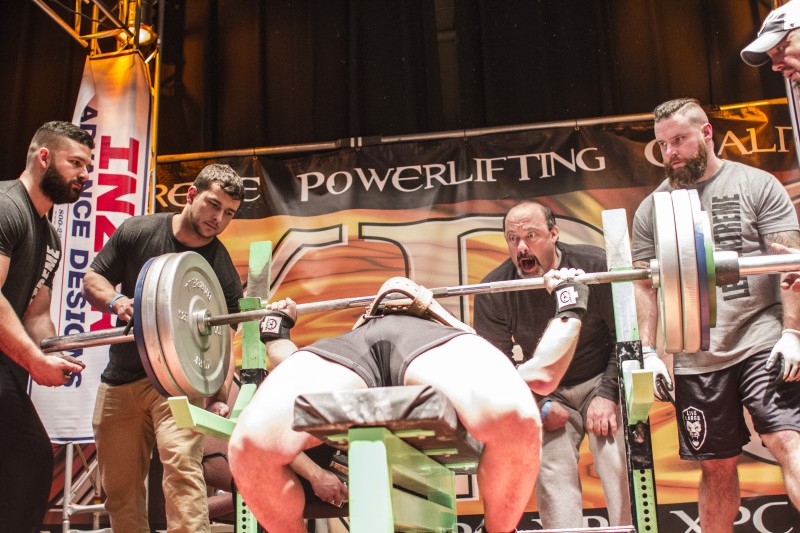
Visualization is a very powerful tool. This is huge regarding the mental aspect of preparation. Your mind controls how you will respond to given situations. Visualization has been proven in studies to produce beneficial effects for an athlete. Those who use visualization techniques usually perform better. They have put themselves into the scenario multiple times already and will execute in the same manner they did in their mind. If this is something you’re not already doing, I urge you to start!
Stay Mobile
A week of rest doesn't mean sitting on the couch all that time. Do some light activity and mobility work to keep your body moving. This will promote blood flow and therefore better recovery. The worst thing you can do is stay stagnant and become tight. I like to keep a light resistance band with me that I can stretch with and go through the pressing motion with. This keeps my upper body from becoming restricted and helps me recover more quickly. Taking walks is also an easy thing to do that can make a profound impact.
Don’t Do Anything Stupid
This goes without saying. Don’t risk your health doing something crazy the week of the meet. A week before the meet isn't a time to put your health in jeopardy. Even the smallest risk isn't worth it. You just put in so much work over the training cycle — why would you ruin it a week before the meet? Plan all your thrill-seeking activities after your meet.
All You Can Eat Sushi
I think you can probably call it a thing now that powerlifters seek out massive amounts of sushi the night before a meet. Don’t ask questions, it just works. Nothing says "I’m about to lift huge weights" like hitting the local all-you-can-eat spot with your enormous friends. Sushi seems to be the perfect pre-lift energy fuel. This is the first place I seek out when traveling to a meet. In all seriousness, have a huge dinner the night before the meet. You need to make sure you’re loaded with all the nutrients you need to perform at your best.
Eat A Good Breakfast
On the flip side, make sure you eat a nutritious breakfast the morning of the meet. This will likely be your last opportunity to eat before you start lifting, so make sure it’s something that will sit well in your stomach. Don’t go into the meet without eating something. If you’re going to work so hard in training day in and day out, why would you risk your ability to lift at 100% by skipping an opportunity to get more nutrients in?
Preworkout
More is not always better here, and you’d be surprised how many times novice lifters ask about when they should take their preworkout. The first thing you need to consider is how long your lifting is going to last. If you’re going to spend all day lifting, you don't want to burn yourself out with three scoops off the bat or you will end up crashing hard. Space your dosing out evenly throughout the meet. You should take your first dose of stimulant 30 minutes prior to your first warm up. Caffeine acts on the body rather quickly but will take full effect within 30 minutes. More powerful preworkout ingredients may sometimes take up to an hour to kick in fully. Make sure you have taken your preworkout before and know what it does and if you can tolerate it. Don’t leave any surprises for meet day.
Final Word
You now know what it takes to become unstoppable at your next meet. You've probably heard the saying, “Failing to prepare is preparing to fail." Well, these words couldn’t ring more true. You can achieve anything you’d like to achieve at your next meet if you carry the amount of confidence to reach it, stay healthy enough to do it, and possess the strength to lift the weight.
Use the peaking program I outlined for you above to help you in your next training cycle. This program works and it will have you feeling more confident and ready than you ever been before. Please reach out to me and let me know how much you PR’ed at your next meet!
My website www.bigbenchas.com and my YouTube channel Big Benchas is dedicated to providing all the content you need to take your bench to the next level. I cover every aspect of how to perfect the technical side of bench pressing. I encourage you all to reach out to me for additional training help. You can reach me at coachben@bigbenchas.com.









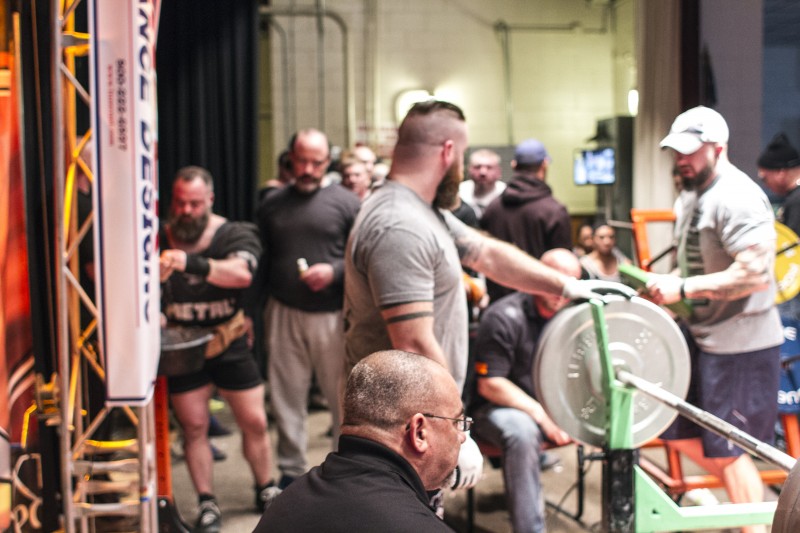
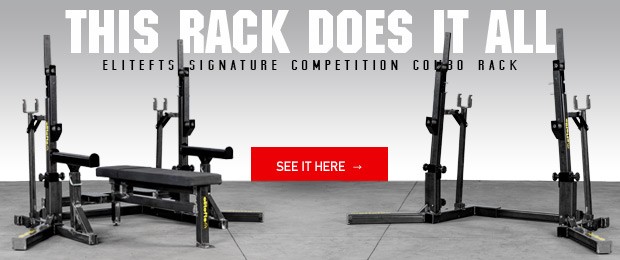
Ben has been helping me with improving my technique these last 3 weeks on the bench.
His expert analysis and programming are invaluable.
Highly recommended.